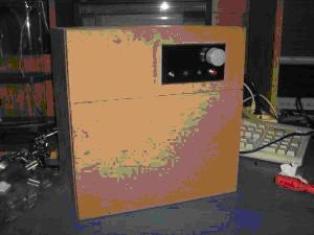Home made UV PCB exposure box
Examples and guidelines on how to do UV PCB exposure box by your self
UV LED PCB Exposure System
Home made UV LED PCB exposure box PCB exposure box made with large array of UV LEDs This project shows the creation of a large array of UV LEDs. They are used to expose a presensititised blank circuit board. Another common method is to use UV tubes. Alfredo has translated it to English as well as he could
more
Ultraviolet light source UV-80 for PCB exposure
Home made UV light PCB exposure box PCB exposure box made with Ultraviolet light for Double side PCB exposure
One of more advanced PCB manufacturing methods is exposing laminate copper boards covered by photo resistive layer through mask. Using UV light in manufacturing PCB has many benefits according to other methods: you can get thin tracks like 0.2mm. You could do this by using other home techniques like laser printers or hand artwork
more
Single LED UV PCB exposure box
Home made UV LED PCB exposure box PCB exposure box made with Single LED UV LZ1-10UA05
Having seen several attempts to make a PCB exposure box with LEDs instead of tubes, i decided to make my own. I wanted a smal one because i make prototypes one of a kind pcbs, and they are always small. Other projects i saw are using a large number of low power uv leds wich are in the miliwatt range. 80 Leds seems to be the minimum number to achieve 1W of UV radiated power, wich is what is needed to expose the PCB in a decent time.
more
Building a UV exposure box
Home made UV LED PCB exposure box PCB exposure box made with array of UV LEDs for Double side PCB exposure
There are two methods of using etchant resist when making circuit boards. We use the toner transfer method that requires ironing on laser toner to the copper, but you can also use chemical resist that reacts to ultraviolet light. [Bogdan] decided to start doing more of the latter so he built a UV exposure box to make the process easier.
more
PCB Photographic Artwork Transfer UV Cabinet
Until now, to transfer the artwork to a photosensitive board, i used a pair of UV lamps. Although they worked pretty well, i thought of upgrading my lab. Thus, i designed and made a prototype photographic artwork transfer box using UV LEDs:
more
LED and Black light UV Light




















